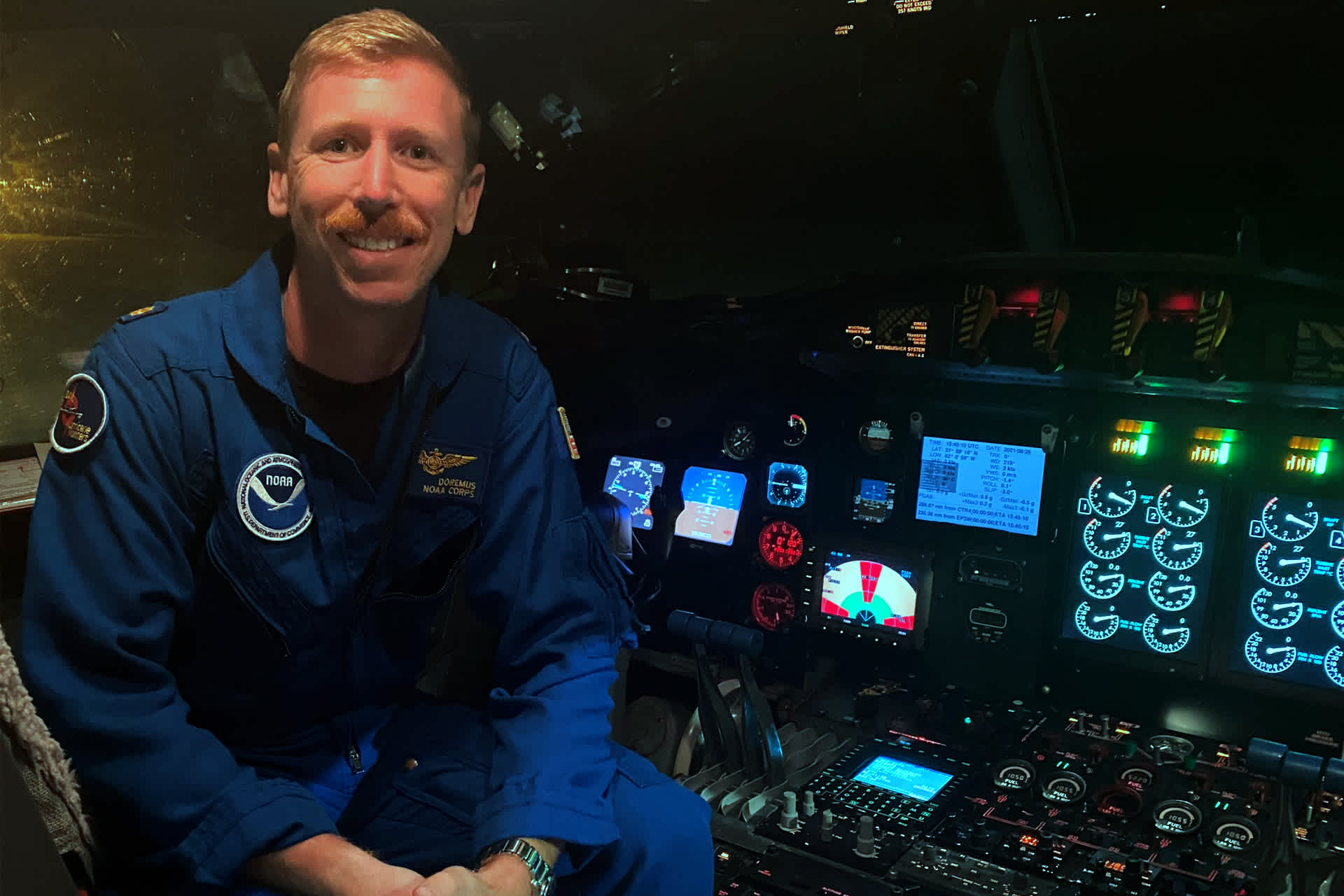Eye of the Storm

Hurricanes are among the planet’s most destructive forces. Each one is different from the last. So when a hurricane forms in the Atlantic Ocean and threatens to make landfall, crews of hurricane hunters from the National Oceanic and Atmospheric Administration (NOAA) fly into the massive storm to learn more about it.
Lieutenant Commander Kevin Doremus is a pilot with the NOAA Commissioned Officer Corps. His job is to guide a Lockheed WP-3D Orion, a plane designed to withstand fierce winds and rain, through the hurricane eyewall. Doremus and his copilot work with an onboard meteorologist known as the flight director to maneuver the aircraft safely into and out of the hurricane. Scientists on the plane operate equipment that measures things such as the air pressure, temperature, and humidity at the storm’s center, as well as the speed and direction of the wind.
Forecasters at the National Hurricane Center use that information to predict the path a hurricane will take and how much storm surge—the rise in sea level—it will produce. Those determine whether evacuations are necessary. Ultimately, the work of hurricane hunters saves lives. Here, Doremus helps describe some key aspects of the job.
1. Hurricane hunters prioritize safety.
Flying into a hurricane may seem risky. But NOAA pilots undergo extensive training, much of which is spent learning how to react if something goes wrong. NOAA also keeps its aircraft in great shape, so mechanical problems are rare. “We will only fly a mission if we can mitigate risks to a safe level,” Doremus says.
2. Hurricane hunters work unusual hours.
Hurricane hunters monitor storms round the clock for days. If Doremus is assigned to a night mission, he gets up at 2 a.m. and is in the air by 4 a.m. After an eight-to-10-hour mission, his crew sleeps while a second crew is in the air. Then he does it all over again. “Getting up that early can be difficult,” Doremus says, “but we’re here to [offer] support 24 hours a day, and we’re ready to do it.”
3. A knowledge of science is key.
Doremus earned a bachelor's degree in aviation management from the Florida Institute of Technology and a graduate certificate in coastal studies from Nova Southeastern University, in Florida. NOAA pilots need a thorough understanding of how storms behave. “The way that we fly the aircraft directly impacts the results of the mission,” Doremus says.
4. NOAA pilots stay busy in the off-season.
The Atlantic hurricane season begins on June 1 and ends on November 30. The rest of the year, Doremus flies smaller planes called Twin Otters to support scientific research around the globe. Crews usually consist of two pilots, who also operate scientific equipment.
5. Strong leadership skills are a must.
“We’re looking for people that have leadership experience—captain of their soccer team, leader of the debate club, whatever it is,” Doremus says, “because you are put in situations where we need people to make split-second decisions.”

